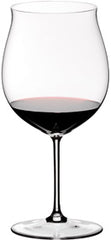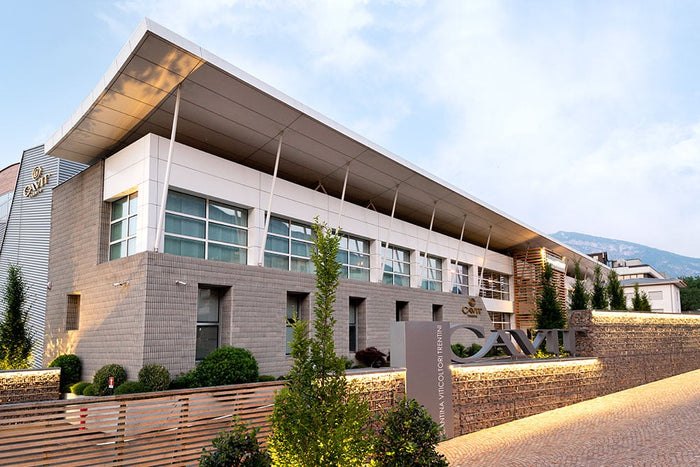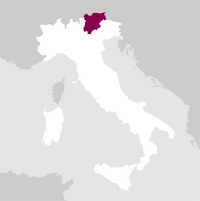Beschreibung
Rebsorte aus dem Südwesten Frankreichs, insbesondere aus dem Bordeaux-Gebiet, wo sie zusammen mit Cabernet die Grundlage für einige der renommiertesten Weine der Gironde bildet. Die ersten Erwähnungen des Merlot stammen aus dem späten 17. Jahrhundert und die erste Beschreibung von Rendre stammt aus dem Jahr 1854. Von Frankreich aus verbreitete sich die Rebsorte Ende des 19. Jahrhunderts im Trentino, wo sie in bestimmten Gebieten die besten Umweltbedingungen für ihren Anbau vorfand. Die Rebsorte bevorzugt gut durchlüftete, niedrige Hanglagen mit kalkhaltigen Lehmböden und eine Erziehungsform mit Kordon oder Guyot. Der Merlot zählt heute zu den typischen Weinen des Trentino und hat aufgrund seiner Struktur, seiner Persönlichkeit und seiner eleganten Entwicklung neue Liebhaber gefunden.
Details

Parfüm

Farbe

Geschmack
Servieren bei:
16 - 18 °C.
Langlebigkeit:
03 – 05 Jahre
Dekantierzeit:
1 Stunde

Kombinationen
- Gründungsjahr: 1950
- Oenologe: Paolo Turra, Guido Mattiello, Fabrizio Marinconz, Andrea Faustini
- Hektar: 6.350
Heute sammelt, prüft und selektiert Cavit die von den angeschlossenen Genossenschaften hergestellten Grundweine und kontrolliert sämtliche Phasen: von der Veredelung bis zur Abfüllung, und all dies unter Rücksichtnahme auf die Umwelt.
Cavit arbeitet mit dem renommierten Istituto Agrario di San Michele all’Adige – Fondazione Edmund Mach (Landwirtschaftliches Institut von San Michele all’Adige – Stiftung Edmund Mach), das die qualifiziertesten Fachleute ausbildet, sowie mit weiteren nationalen önologischen Forschungszentren zusammen.
Das Ergebnis ist eine durch zahlreiche nationale und internationale Auszeichnungen prämierte Qualität.
Die Geschichte von Cavit beginnt 1950, als sich einige Winzer, der Einzigartigkeit ihres Landes bewusst und mit dem Wunsch der Aufwertung ihrer Produkte, zusammenschließen und einen Verbund von Winzergenossenschaften, den Keim von Cavit, ins Leben rufen.
Der Verbund entsteht zur Unterstützung der angeschlossenen Genossenschaften und Förderung der „Kultur” des Qualitätsweines in der gesamten Region, und unterstützt die Winzer in allen Phasen ihrer Arbeit.
1957 wird die technische Funktion durch die geschäftliche Funktion ergänzt: der Verbund hat sich eine eigene Kellerei zugelegt, um den wachsenden Bedürfnissen seiner Mitglieder gerecht zu werden.
1964 wird der derzeitige Standort in Ravina di Trento eingerichtet, der seit 1977 bis auf die heutigen 80.000 m² erweitert wird.
Von da an wurde Cavit zur Anlaufstelle für die Trentiner Weinproduktion.
Cavit gehört heute zu den größten Betrieben in der Weinindustrie und ist national und auch international erfolgreich. Der Hauptsitz befindet sich in Ravina, wo sich ebenfalls die Produktion und die Logistik befinden, die die Kellereien für die stillen und Schaumweine, sowie eine Enothek beherbergt. Cavit ist auch Eigentümer von Maso Toresella am Toblinosee ist, das für Betriebsausflüge und Zusammenkünfte genutzt wird.
Mehr lesen


| Name | Bottega Vinai Merlot Trentino 2021 |
|---|---|
| Typ | Rotwein still |
| Weinbezeichnung | Trentino DOC |
| Jahrgang | 2021 |
| Größe | 0,75 l |
| Alkoholgehalt | 13.5% nach Volumen |
| Rebsorten | 100% Merlot |
| Land | Italien |
| Region | Trentino Südtirol |
| Anbieter | Cavit |
| Herkunft | Die am besten exponierten Hügel des Vallagarina und des Trienter Gebiets |
| Klima | Das in diesen Gebieten ist subkontinental, mit kalten, oft schneereichen Wintern und heißen Sommern, aber mit einer guten Temperaturspanne zwischen Tag und Nacht. Das Vallagarina profitiert außerdem vom Einfluss der Ora del Garda, einer angenehmen Brise, die in den Nachmittagsstunden vom Gardasee aufsteigt. |
| Bodenzusammensetzung | Im Vallagarina befinden sich die Weinberge auf den durch die Ablagerungen alter Bäche gebildeten Konoiden, wo wir gut strukturierte, gut durchlässige Kalkböden mit einem hohen Tongehalt vorfinden. Auf den Hügeln um Trient befinden sich die Weinberge auf Gletscher- oder Moränenterrassen mit tiefgründigen, gut entwässerten Böden mit gutem Tongehalt. |
| Ertrag pro Hektar | 55 hl/ha |
| Ernte | Die Trauben werden Ende September geerntet, wenn sie voll ausgereift sind und die optimale phenolische Reife erreicht haben. |
| Gärtemperatur | 28 °C (maximal) |
| Weinbereitung | Nach dem Abbeeren wird der Most in Kontakt mit den Schalen für etwa 12 4 Tage bei einer Temperatur von höchstens 28 °C in Edelstahlbehältern vergoren. |
| Reifung | Nach der Gärung wird der Wein in Barriques aus französischer Eiche ausgebaut. Danach folgt eine kurze in slawonischen Eichenfässern und die Abfüllung in Flaschen. |
| Gesamtsäure | 4.6 gr/L |
| Trockenextrakt | 29.0 gr/L |
| Allergene | Enthält Sulfite |




